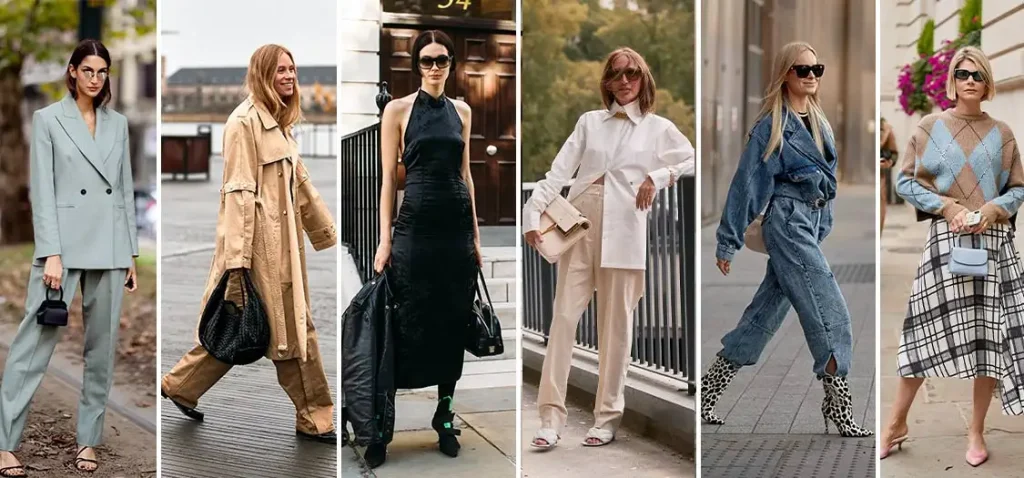In an age defined by fast fashion and fleeting trends, the allure of retro style serves as a compelling testament to the enduring elegance of past aesthetics. Retro fashion is not merely a nostalgic nod to yesteryears; it encapsulates a myriad of styles, spanning from the roaring 1920s to the groovy 1970s. Whether you’re a seasoned vintage enthusiast or a newcomer eager to incorporate retro elements into your wardrobe, this guide provides timeless fashion tips to help you achieve a classic look that resonates with the charm of previous decades.
Understanding Retro Style
Retro fashion refers to clothing and accessories that reflect past trends, often drawing inspiration from specific time periods. The key to mastering retro style is to embrace the essence of these eras while infusing your personal flair. Classic designs, vibrant colors, unique patterns, and nostalgic silhouettes often characterize retro pieces. Before diving into your closet or the nearest vintage shop, it’s essential to understand the key styles that can help you create a cohesive and stylish look.
1. Choose Iconic Pieces
When building a retro wardrobe, start with iconic essentials that define various decades. Here are some must-have items for different eras:
- 1920s Flapper Dress: Characterized by loose silhouettes, fringe, and beadwork, flapper dresses embody the spirit of the Roaring Twenties.
- 1950s A-Line Dress: With cinched waists and full skirts, A-line dresses evoke the classic femininity of the 1950s, perfect for casual outings or formal events.
- 1960s Mod Fashion: Think shift dresses, bold patterns, and knee-high boots. This era celebrates youthful exuberance and fun silhouettes.
- 1970s Boho Vibes: Maxi dresses, flared jeans, and paisley prints define the eclectic style of the ‘70s, offering a laid-back yet fashionable aesthetic.
2. Embrace Vintage Accessories
Accessories can elevate any outfit, and retro-inspired pieces are a classic way to enhance your style. Consider the following additions to your collection:
- Statement Jewelry: Bold, chunky jewelry, like large earrings or beaded necklaces, can add personality to any ensemble.
- Fedoras and Wide-Brimmed Hats: Hats from different eras can not only provide protection from the sun but also serve as a striking centerpiece to your outfit.
- Vintage Handbags: Opt for structured bags, clutches, or crossbody styles that reflect retro designs to complete your look.
- Sunglasses: Cat-eye or oversized sunglasses can exude a glamorous vibe reminiscent of Hollywood stars.
3. Play with Color and Patterns
Retro fashion is characterized by its dynamic use of color and bold patterns. To embrace this aspect of retro style, consider:
- Color Palette: While neutral tones dominate modern fashion, retro styles often embrace vivid hues and striking contrasts. Incorporate colors like mustard yellow, burnt orange, and teal into your outfits for an authentic vintage feel.
- Patterns: Florals, polka dots, and geometric prints were staples in retro fashion. Don’t shy away from mixing and matching patterns as long as they harmonize in color to maintain a cohesive look.
4. Opt for Tailored Fits
One of the hallmarks of retro fashion is the tailored fit of garments that accentuate the body’s silhouette. While oversized clothing trends dominate today, a well-fitted garment can impart sophistication and elegance. Consider tailoring modern pieces to suit your body shape or seek out vintage options that hug and accentuate your best features.
5. Footwear Matters
The right pair of shoes can truly complete a retro ensemble. Depending on the decade you are channeling, your footwear choices can range from:
- Mary Janes: Perfect for a 1920s or 1960s look, these classic shoes add a feminine touch to any outfit.
- Kitten Heels: A nod to the 1950s, kitten heels can transition from formal to casual with ease while remaining effortlessly chic.
- Platforms: Channel the ‘70s with platform shoes that provide height and comfort, making them ideal for any retro-inspired outfit.
6. Mix Modern and Vintage
Incorporating retro style into your wardrobe doesn’t necessitate a complete overhaul. Instead, blend vintage pieces with contemporary items to create a balanced and unique look. Pair a classic A-line skirt with a modern cropped top or style a vintage blazer over a simple, contemporary dress. The juxtaposition of old and new can lead to a more personalized and relatable aesthetic.
Conclusion
Retro style is more than a mere fashion choice; it’s an art form that allows individuals to express their personalities and stand out from the crowd. By integrating these timeless fashion tips into your wardrobe, you can create a classic look that pays homage to eras gone by while remaining uniquely your own. Remember, the essence of retro fashion lies in confidence and creativity—wear your vintage pieces with pride and allow your style to tell a story.

